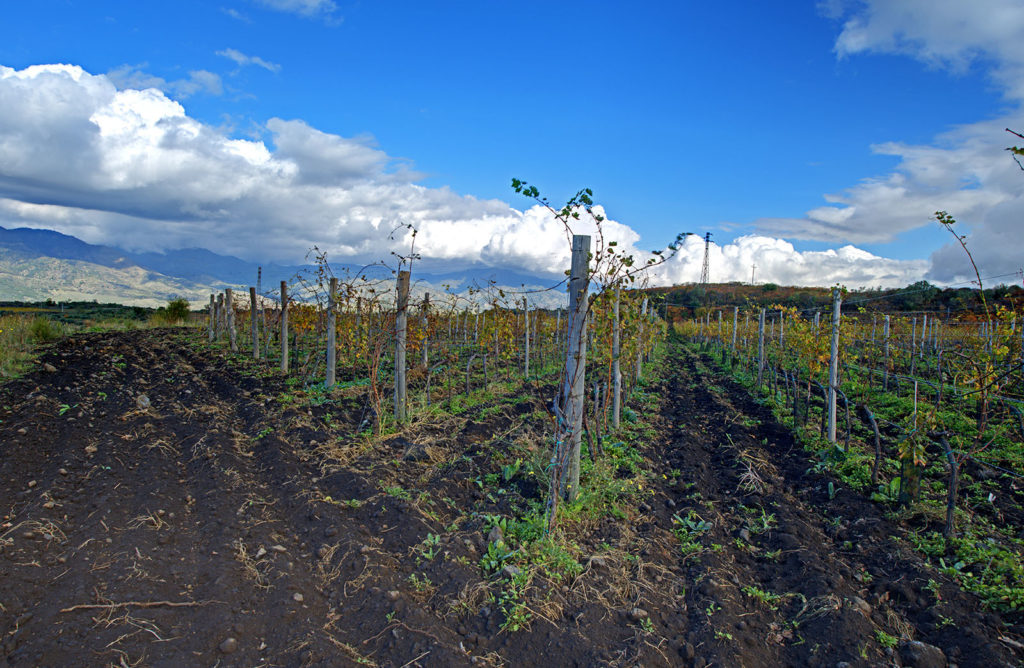In the last 20 years, Etna has become one of the most famous and appreciated terroirs in terms of wine production. Etnean wines are increasingly in demand worldwide, and all the world’s largest wineries are still buying hectares of land to build new facilities.
This is not only due to the
fertility of the volcanic soil
but above all to the exposure of the volcano’s slopes to the dominant winds in the area and the fact that the steep incline brings the hilly areas very close to the sea.
Precisely because of the difference in these characteristics, there are three distinct wine-making areas: the lower south-western side, the eastern side and the northern side, with the latter being able to exploit double wind exposure, from the sea and from the land. The typical grape varieties of the volcano are Nerello Mascalese, Nerello Cappuccio, Carricante and Catarratto.
